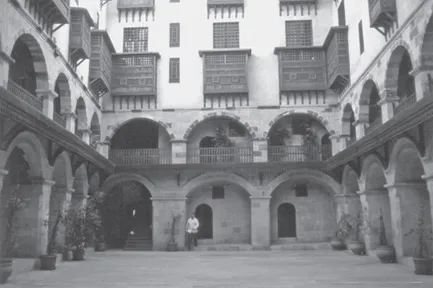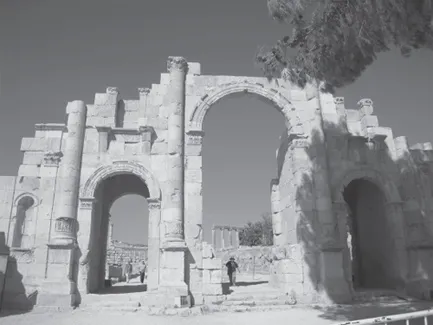![]()
1Introduction:
Global Boundaries between Preservation and Conservation
No person within the town . . . shall unroof or dismantle any house without a decree of the senate, unless he shall intend to restore such house to its former condition. Any person acting in violation of this prohibition shall be liable to pay . . . a sum of money equivalent to the value of the said house.1
This clause is part of conservation legislation issued several hundred years ago during the Roman Empire.2 It addressed the citizens of Tarentum, a former Greek federation colony in southern Italy which was later amalgamated with the nearby Roman colony established in 123 BC. Its citizens had to adopt Roman laws, dedicated partly to safeguarding the region's built heritage. Lex Municipii Tarentini provides evidence for the existence of an early conservation management concept, challenging a common belief which dates the origins of conscious heritage conservation within a management frame to the European Enlightenment. It also uses the word restoration, which we still use. Contrary to some other terms in conservation terminology, restoration is a rare example whose meaning has hardly changed since the Roman period, and there is almost global consensus on its meaning. The glossary of selected terms of the US National Trust Library describes restoration techniques as “methods used in rebuilding buildings and structures with historically accurate materials to achieve historical authenticity in keeping with a particular time period or event.”3 This definition closely corresponds to the ancient Roman description of this action. Their action was probably limited to a shorter time scale, whereas current restoration concepts aim to interpret any historical period. In 1999, Article 1.7 of the International Council on Monuments and Sites (ICOMOS) Burra Charter defined restoration as “returning the existing fabric of a place to a known earlier state by removing accretions or by reassembling existing components without the introduction of new material.” Here is an important detail which is not clarified in the US National Trust Library version. Burra restoration does not allow the use of “new” materials and is thus distinguished from “reconstruction,” which allows new material to include recycled material from other places.4
Unlike restoration, there seems to be no consensus for the word conservation in its global use. In the Australia ICOMOS Burra Charter, conservation includes all the processes looking after a place so as to retain its cultural significance of a place, including repair and restoration. However, in some countries like Turkey, restoration is rather perceived as a separate category, as indicated by the name of the Istanbul Central Laboratory of Restoration and Conservation, a governmental institution in charge of rehabilitation and protection of movable and immovable property.5 Both the name and the description of responsibilities of this institution seem to interpret restoration as a separate category to conservation.
Although the current version of the Burra Charter dates from 1999 and has influenced the development of national charters in other countries (e.g., China), it seems that there is still no global consensus regarding its terminology.6 One would think that the Charter, widely used by professionals, as one of the rare documents giving practical examples for the clarification of its articles, would have helped towards a global consensus, but this is not the case. Stephen Emmitt stated in 2002 that conservation allows alterations and improvements, and a change of use is also to be expected. Emmitt's version of the conservation of a Georgian town house included the application of technical features such as electricity, insulation and new bathroom and toilet facilities.7 Under the Burra Charter, this would not denote conservation action but would rather fit within the category of adoption, meaning modifying a place to suit the existing use or a proposed use. The historic commercial centre shown in Figure 1.1 has been reconstructed, but it is not a reconstruction, as it has introduced mostly new materials. Some authors also alternate between conservation and preservation, which is probably the most difficult definition to clarify regarding boundaries between the two. In their article, “The Conservation of Historic Buildings in Britain and the Netherlands,” Nigel Dann and Mark Steel used the words preservation and conservation interchangeably, whereas Emmitt saw preservation solely as the retention or reinstatement of an important structure to its original form, rather like a “museum.”8 This approximately matches the Burra Charter definition, which sees preservation as maintaining the fabric of a place in its existing state and retarding deterioration. This definition emphasises maintenance which should exclude “repair,” whereas Article 17 still states that “new work (e.g., stabilisation) may be carried out in association, when its purpose is the physical protection of the fabric.”9 For example, the columns in Curates Street in Ephesus have been stabilised through anastylosis, as the new work aimed to protect the fabric which would have deteriorated if the columns had been left in fragments. A similar practice can be seen in Petra, Jordan (Figure 1.2). This attitude was described by James Marston Fitch as being the most conservative of all levels of curatorial intervention. He asserted that it is also the safest procedure in the sense of “least done, soonest mended.”10 This description could clash with the “reinstatement” aspect of Emmit's description, which may involve a major action in many cases and would be restoration rather than preservation, following the Burra Charter definition.
Figure 1.1 An historic commercial centre (wakala) in Cairo, Egypt: restoration, reconstruction or adaptation? Image by Zeynep Aygen.
Figure 1.2 A structure in Petra, Jordan: preservation, conservation, restoration, reconstruction or stabilisation? Image by Zeynep Aygen.
Conversely, Fitch saw the world's oldest continuous preservation project as the Japanese temple complex of Ise Naiku in Honshu Province, as it has been replicated every twenty years since the reign of Emperor Temmu (AD 673–676), and stated that immortality could only be won by period replication.11 Can this be called a preservation project, or is it rather reconstruction in a very broad sense? Provided we assume that the craftspeople who rebuild the temple guard their techniques jealously, so that the continuation of the building method fulfils the principle of “like for like” in the modern sense, it is a typical reconstruction. Indeed, this type of accurate reconstruction was common practice for early Shinto buildings in Japan and has probably been practised at Ise Naiku, as Soper indicated. Soper also mentioned that at Ise Naiku the extracted materials of the old dismantled precinct were put to some worthy use elsewhere, so that this recycling ensures that the tradition is never broken.12 In any event, this approach contradicts Fitch's “least done, soonest mended” description of preservation, although it fits within the wider category called “historic preservation,” discussed later in this chapter.
Global confusion over terminology, especially regarding the difference between conservation and preservation, grows when one looks at North America. The US National Trust Library warns that, in the US, conservation does not apply to buildings but to other objects and national resources and that non-US publications may not conform to this difference. Preservation in the US means to maintain a building in its existing state; however, it differs in the degree of intervention by usually allowing limited alterations and even additions. In this it is much closer to what some other parts of the world call conservation. Similar to the US, in Canada, preservation relates to places and sites, whereas conservation embraces all cultural resources.13 Other national definitions differ from the more commonly used ICOMOS terminology. For example, the Indian National Trust for Art and Cultural Heritage (INTACH) Charter of 2004 states that, while Western ideology of conservation advocates minimal intervention, India's indigenous traditions idealise the opposite (see Chapter Two). Western ideology underpins official and legal conservation practice in India and is appropriate for conserving protected monuments. However, conserving unprotected architectural heritage offers the use of indigenous practices.14
The use of the word conservation in this document is generic and could be replaced in some cases with reconstruction or rehabilitation, a term which Bernard Feilden used to differentiate conservation from more drastic interventions.15 What is more important to the theme of this publication is the differentiation emphasised by INTACH as “Western ideology.” This phrase implies that indigenous techniques and crafts in some countries have not been subject to such drastic changes in culture and technology as in more industrialised countries, most of which are now in a postindustrial phase, concentrating on services rather than production. In certain parts of the world, an historical continuity in production exists compared with others. India aims to protect this continuity as a civilisation legacy.
For the sake of consistency and clarity, this publication prefers to accept ICOMOS terminology and will use conservation processes as a generic term to include all the above intervention levels, in accordance with Article 14 of the Burra Charter. It will also accept historical preservation in its broader context to describe the modern interest in the preservation of cultural heritage, as used by Jukka Jokilehto in the same sense in his 1998 article.16 This aligns with the semantic structure of preservation, which itself differs in its dictionary meaning from conservation; the latter is rather to preserve from change, thus justifying historical preservation used in a general sense for those types of activities that protect historical buildings.17 However, wherever possible, it will refer to diverse definitions which may be not accepted by the majority but which will enrich the discourse by reflecting lesser-known philosophies and conditions, as in the case of the Indian charter.
There is also an historical dimension. Extensive evidence exists of preservation concepts practi...


